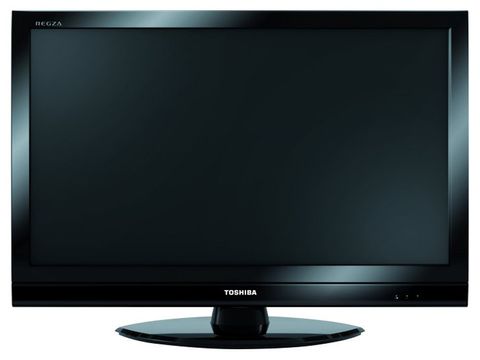Why you can trust TechRadar

A cursory glance might suggest the picture quality from the 37RV753 is adequate, but you don't need too dig deep to uncover problems. The lack of any proprietary refresh modes cripples any ability to maintain high-definition clarity with motion (note that, according to the Toshiba website, the set has Active Vision 11, but the instruction manual says differently and the TV's performance corroborates this).
A horizontal scrolling monoscope test pattern gives a graphic representation of moving picture fidelity. As a still image, this test pattern is as sharp as you might hope, with 1,080 lines of fine detail clearly resolved.
However, as soon as the test pattern begins to scroll horizontally, the perceived onscreen definition sinks like a sumo wrestler in a Koi carp pond. If you can pick out more than 600 lines, you are being generous.
This inability to hold onto detail is why some HD programmes look inexplicably, sporadically soft; it's most noticeable on pictures from the Freeview HD channels; some shows (talking-head, studio based stuff) can look rather nice and crispy, however action sequences and sport have a 'now we're sharp, now we're soft' bleariness about them.
A test pattern with ever-decreasing fine line graticules developed by the Advanced PDP Development Centre confirms this lack of motion picture resolution: any fine detail beyond 600/650 lines evaporates as soon as it begins to move. The loss of fidelity worsens in scenes of low brightness.
A secondary test pattern, comprising of Japanese and English scrolling text, smudges badly when run at 30 per cent luminance.
On the plus side, colour fidelity is rather good. There is a tendency for CCFL-backlit screens to render reds as rather orangey, but that isn't the case here; roses are recognisably red. However, colour gradations are a little steppy, which suggests bit-depth limitations.
As always, you'll need to take care with sharpness when calibrating: anything over -20 on the calibration slider seems to be counter-productive.
Further up Toshiba's range ladder are TVs with Film Stabilization, a processing mode designed to eliminate cinematic judder. Unfortunately, this is absent on the 37RV753 – with predictable results. When Prince Charming canters behind a rocky outcrop on the remastered Blu-ray of Sleeping Beauty, the scrolling image resembles a flick book.
On the plus side, there is none of that ice-skating artificial smoothness so commonly associated with high frame-rate modes.
Like all CCFL-backlit screens, black levels suffer in low ambient lighting. What looks deep black in a hotly lit room, sheepishly becomes grey when the light level in the viewing room dips. Blacks are not ruinously grey, but there is some loss of visual snap.
It's worth noting that the panel itself is not overly kind to off-axis viewing. You only have to manoeuvre some 15° from square-on to see the colour drain from the faces of those onscreen.
Current page: Toshiba 37RV753: Picture
Prev Page Toshiba 37RV753: Ease of use Next Page Toshiba 37RV753: Sound and valueSteve has been writing about AV and home cinema since the dawn of time, or more accurately, since the glory days of VHS and Betamax. He has strong opinions on the latest TV technology, Hi-Fi and Blu-ray/media players, and likes nothing better than to crank up his ludicrously powerful home theatre system to binge-watch TV shows.


